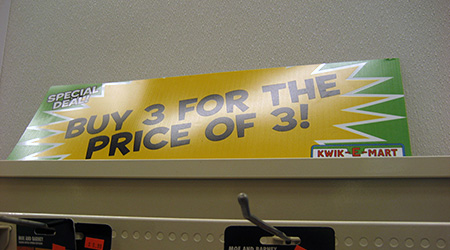Tips For Effective Pricing Of Your Product

Effectively pricing a product in the marketplace requires a detailed analysis and understanding of what factors are in play including consumer demand and positioning against competitive offerings. Additional complications such as an increases in raw materials or unplanned losses due to shrinkage will also impact your pricing model. Determining the breakeven point is only part of the picture and can actually make a business go under even if they're having record sales.
As it is often said, you only get one chance to make a first impression and so it goes for products. How your product is presented to the customer is an important part of pricing. Are you presenting your product as a high-end consumer good that individuals covet or is it more of a utilitarian base product you're hoping the move in volume. This is important because a high-end product can have significantly higher margins which can allow for sales or reduced pricing for a limited time. More utilitarian products work on razor thin margins and inventory control becomes more important. Premium brands command more marketplace attention and can drive increased sales but it depends on how the product or service is perceived by consumers.
Presentation of the brand is more than just pretty pictures however as it includes the value-added components as well. How does your product relate or stack up against the competition? It's not good enough for an organization to say that a product is premium and has fancy packaging so they can charge more. It has to deliver on these claims by offering additional features and going above and beyond what the customer expects in terms of quality and performance. The opposite also holds true that your product may be significantly superior to the competition and viewed as such by customers but if not priced correctly as a premium brand then you could be leaving money on the table. This may also actually lead to a negative impact as it may come off as a deal that is too good to be true is not marketed correctly.
As any business owner knows pricing a product must obviously take into account the cost of goods sold and targeted profit margins. A premium product may be priced that way simply because the underlying materials and developing costs dictate pricing. A high-end product may have relatively higher pricing but still have razor thin margins and could actually lose a company money. This can happen if consumers don't understand that you get what you pay for. Touting a product or services inherent quality in marketing materials is very important when setting pricing. It is just as important to point out how your competitors' product is made to show that they have cut corners or use substandard manufacturing and therefore should be avoided.
It would be great if every product made was subsequently sold and resulted in the appropriate level of profit. Unfortunately due to theft, damage and returns there will always be some percentage of product sold which lowers profit margins. Accurately anticipating the cost of these scenarios will affect how much additional pricing needs to be added to each product. Disruptions in the supply chain resulting from political upheaval or natural disaster can negatively impact available resources and increase costs. Price stability can never be expected when manufacturing a product or offering a service and a cushion should always be built in to the pricing to absorb shocks to the system.
Effectively pricing your product is much more complicated than saying I think it cost me $10 to make this so l will charge the public $15 and net a $5 profit. Certain industries like real estate and healthcare are fortunate enough to essentially charge whatever they want due to captive audiences and grandfathered pricing structures. Unfortunately for everyone else, most businesses need to evaluate multiple costs, the competition and micro and macroeconomic environments to effectively price a product. With enough thoughtful consideration and analysis any business should be able to determine a price that allows for sustained economic growth and long-term financial stability.







